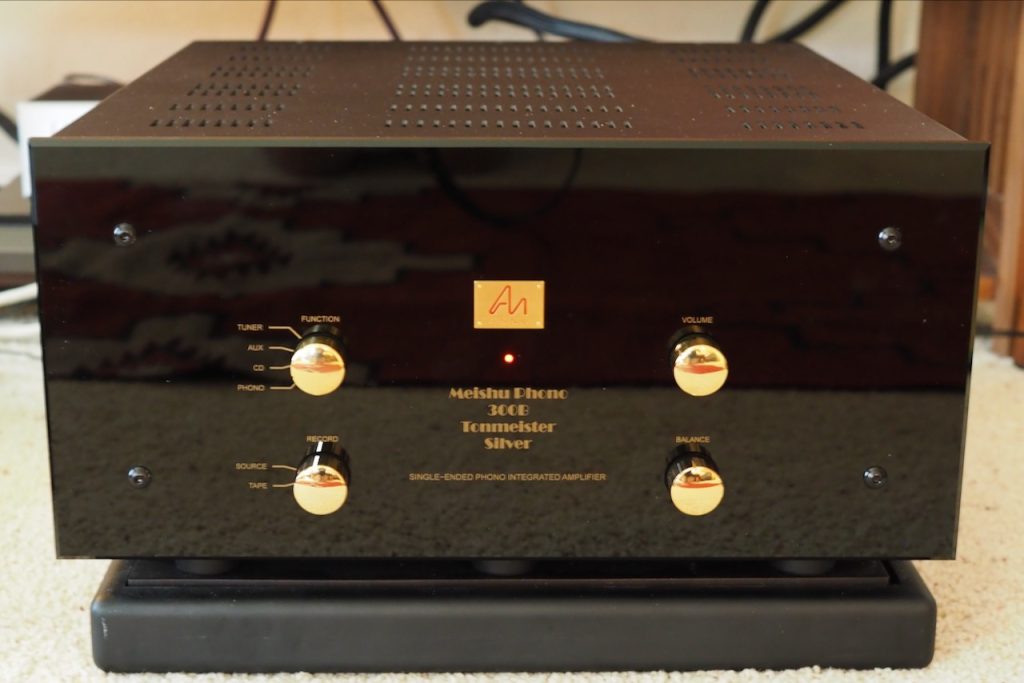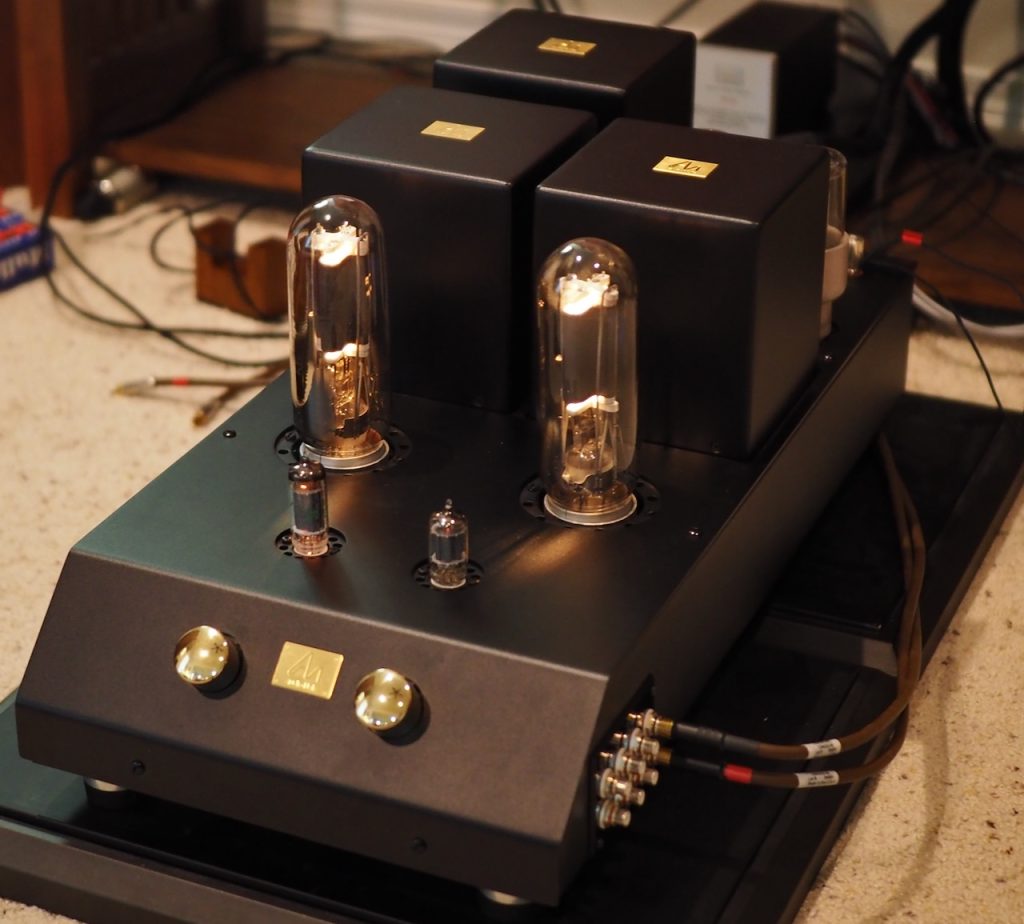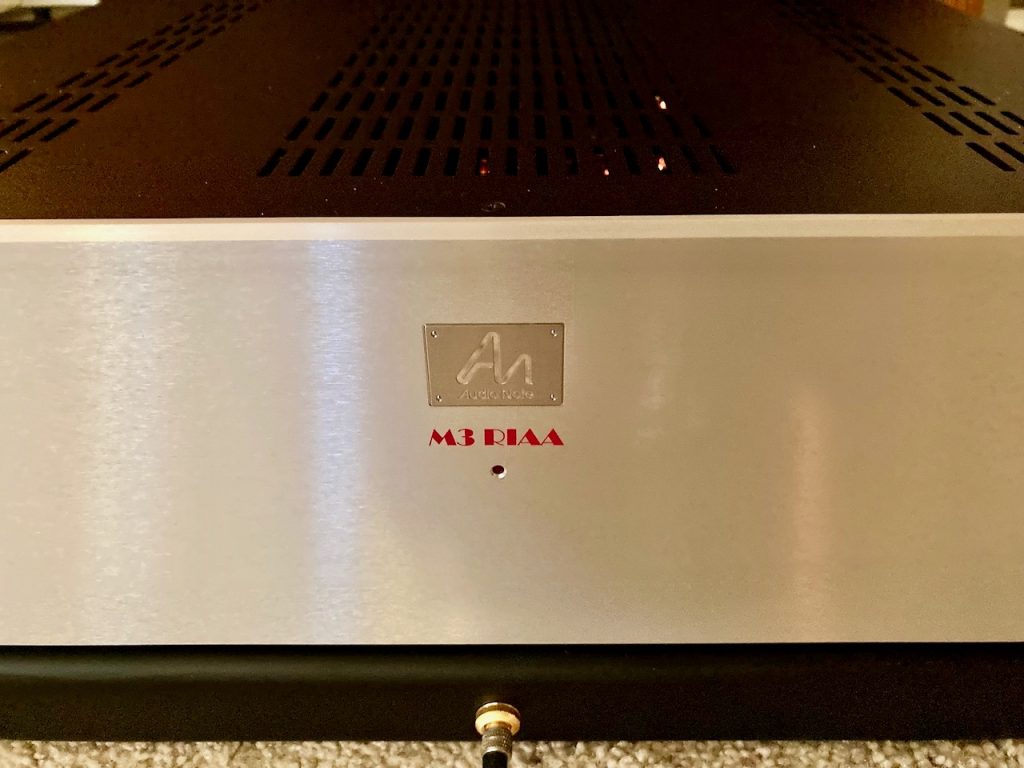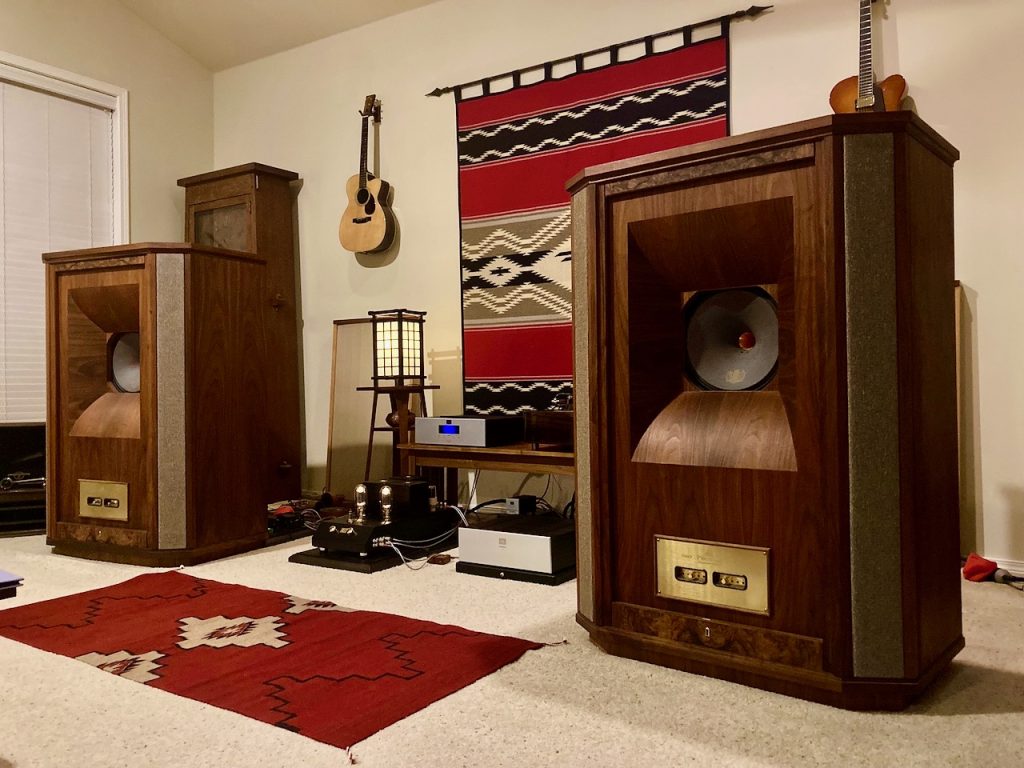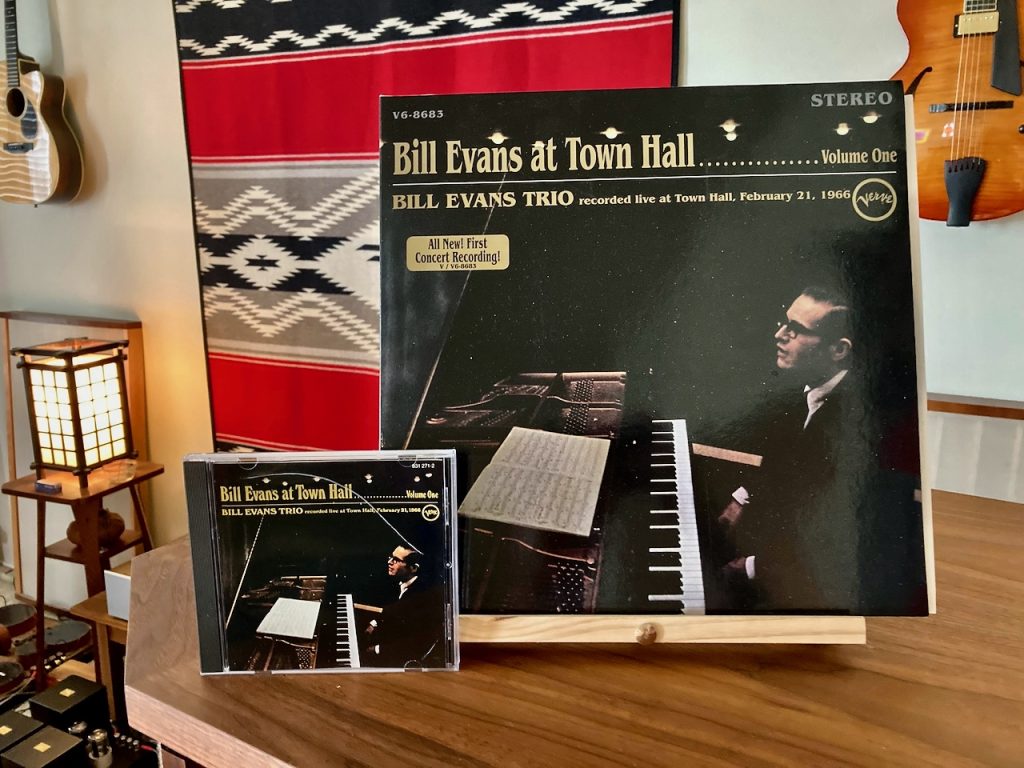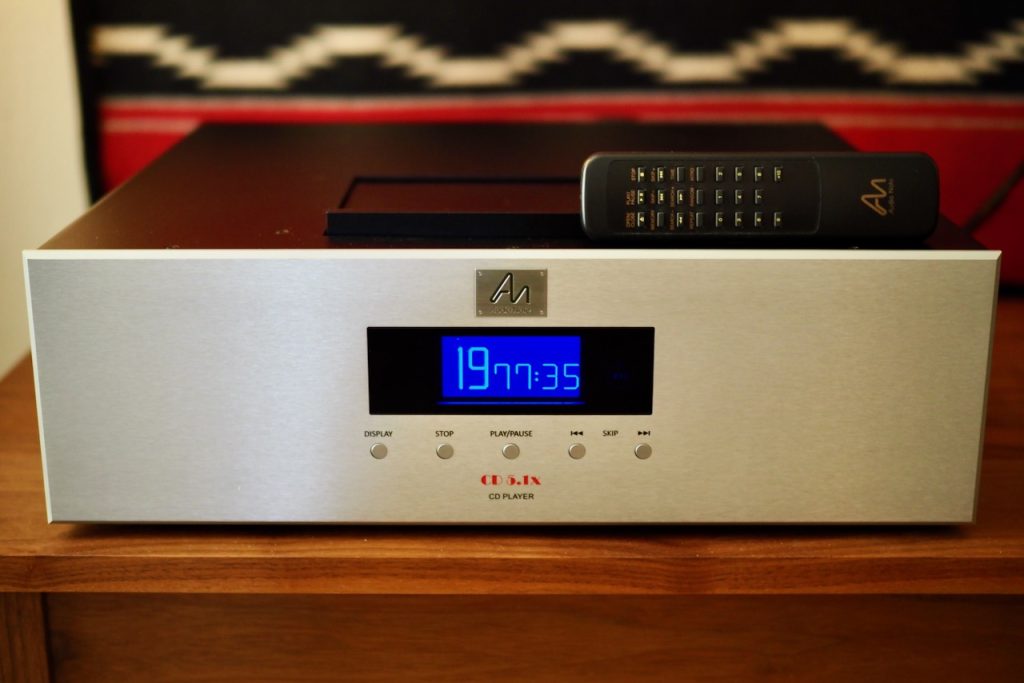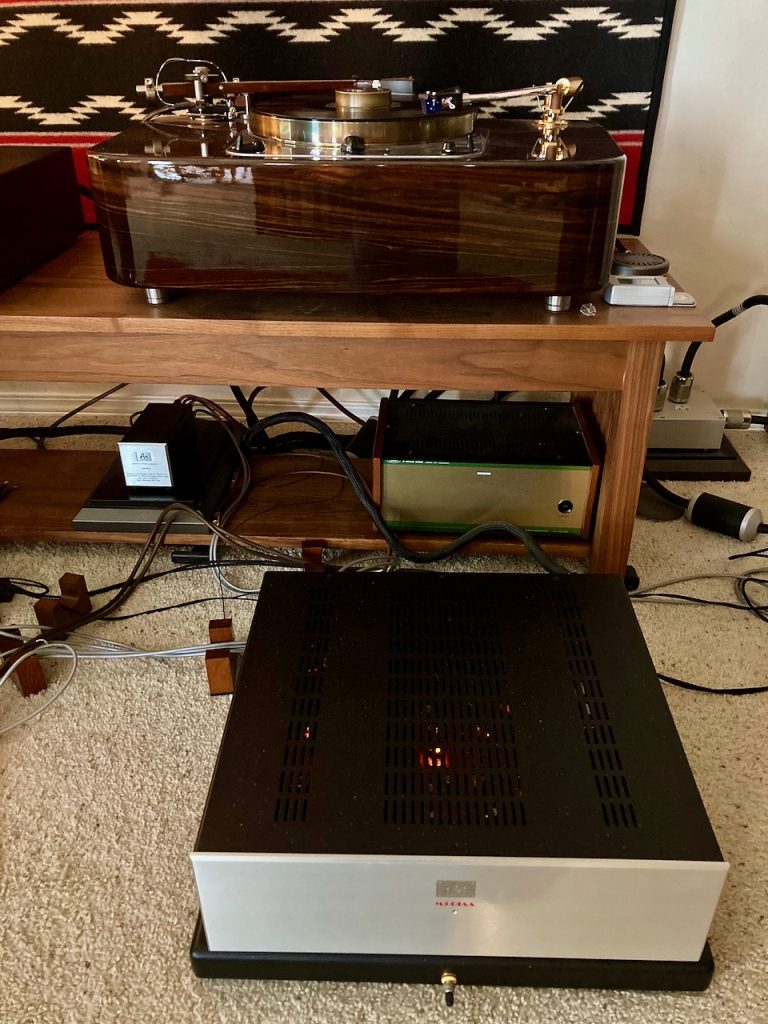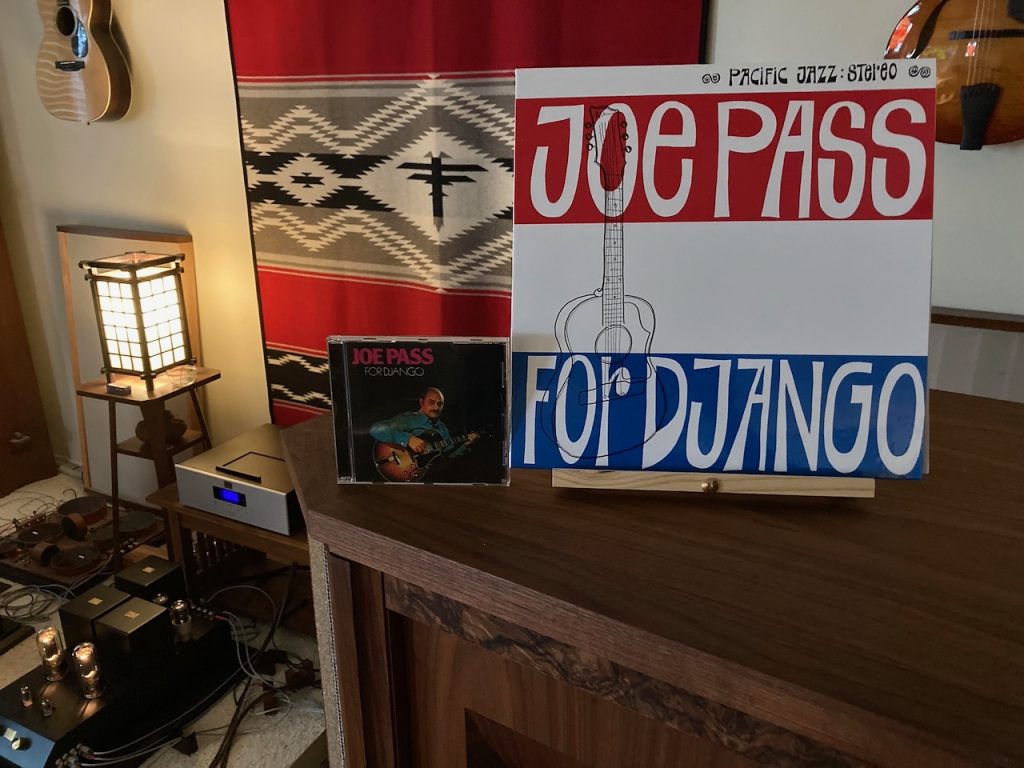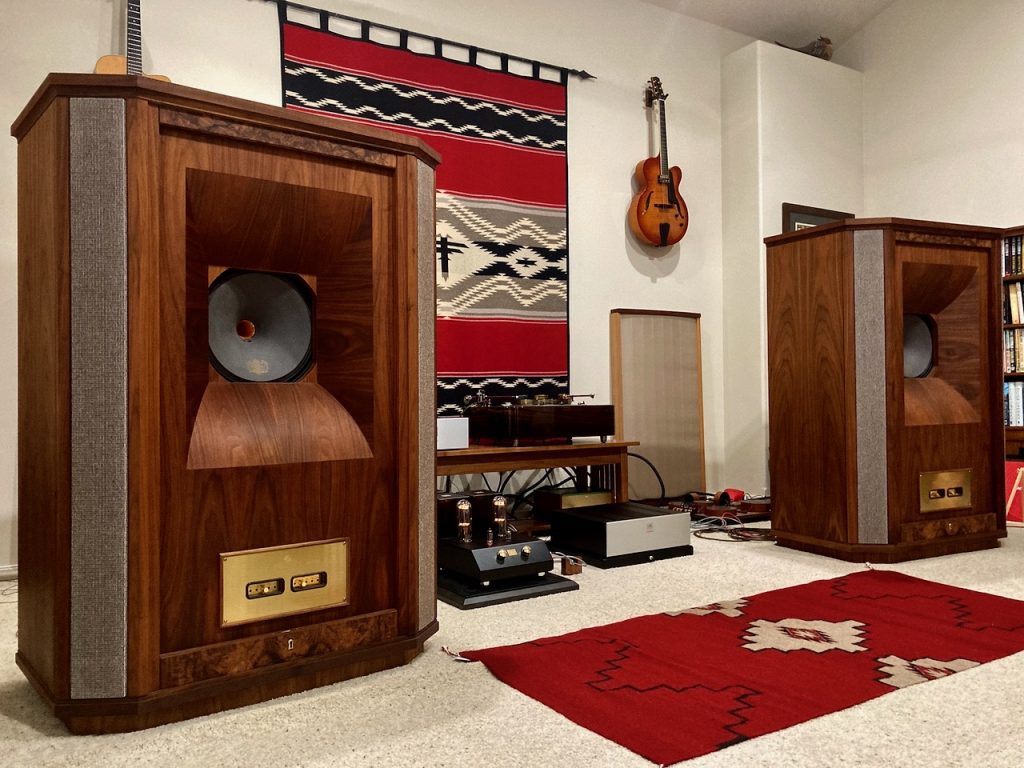Greetings friends, I hope you are doing well!
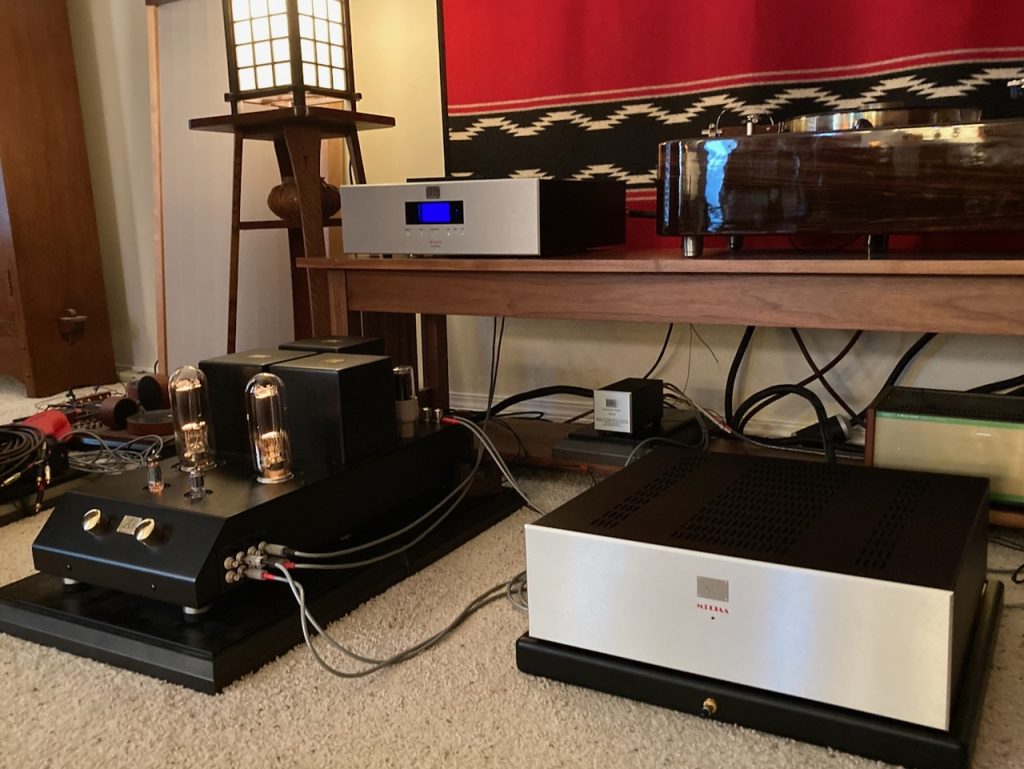
Tomei 211 SET integrated amplifier (left, $59,587.00 USD), M3 RIAA phono pre (right, $11,314.00 USD)
Today's listening report is about the exotic Audio Note (UK) Tomei 211 integrated amplifier & M3 RIAA phono preamplifier combination.
If you are a regular reader, you know I am a huge fan of integrated amplifiers. I believe they are a great choice for most audio enthusiasts seeking a high-fidelity audio system.
My view is that by keeping it simple with fewer amplification components one is more likely to achieve a higher level of performance.
With my enthusiasm for integrated amplifiers, Peter Qvortrup has been having me listen to his integrated amplifier product line as it steps up through the Audio Note (UK) "level system".
The idea behind the "level system" is that it serves to help Audio Note (UK) customers and dealers build a satisfying audio system by combining simpatico components at complementary levels of performance & price, from source to loudspeakers (and everything in between).
As one ascends up through the level system each successive level is designed "... to ever greater levels of ability to contrast dynamics, timbre and recording quality ...".
Peter frames each 'level' by how well it addresses the accuracy, authenticity, and authority in the playback of recordings across a wide variety of musical genres.
This process starts with the design of a circuit that is "un-contaminating as possible", and then choosing circuit components of a quality that are most complimentary to providing listeners the "best of what the artists and their art can provide" at that particular cost-performance level.
Let me provide a couple of 'Level' examples from my personal experience: the Level 2 Oto Phono SE Signature EL84 integrated amplifier, and the Meishu Phono Silver Tonmeister 300B single-ended-triode integrated amplifier.
My introduction to Audio Note (UK)'s integrated amplifier product line was the Level 2 Oto Phono SE Signature integrated amplifier (review HERE).
The circuit design that was deemed to be as "un-contaminating as possible" at Level 2 (and this price range) was an EL84 based Class A parallel single-ended-pentode design with an output of 10 watts per channel.
The circuit components for this Level 2 design include "Audio Note (UK) Copper foil capacitors used in the most critical areas. Audio Note (UK) Tantalum resistors used in the most critical areas. Custom designed IHiB output transformers, manufactured by Audio Note (UK)."
My conclusion about the Level 2 Oto was (from the review): "While the Oto Phono SE Signature at $6330 USD is not inexpensive in real-world terms, considering its overall performance, boutique build quality, and its included features, the Oto Phono SE Signature represents enormous value to the serious music lover or high-performance audio enthusiast at its price point."
I'm not the only one who holds the Oto in high esteem (from the review): "I got a nice message from mastering engineer—and man of many talents, Steve Hoffman—that said, "I use an Audio Note (UK) Oto Phono SE Signature in my studio. It's amazing, especially for the money, a really nice EL-84 unit that does it all." and "The Oto has everything I need in the studio, phono section, tape/EQ loop, everything.""
My introduction to the next level up, Level 3, was the Meishu Phono Silver Tonmeister 300B single-ended-triode integrated amplifier (review HERE).
The circuit design that was deemed to be as "un-contaminating as possible" at Level 3 (and this price range) was a 300B circuit with pure Class A operation, zero negative feedback, single ended output stage, valve rectification, and directly heated triode operation, with an output power of 8 watts per channel.
The circuit components for this Level 3 design include "In house designed and manufactured Audio Note (UK) IHiB copper / copper interstage and output transformers, IE copper / copper PSU Choke and mains transformers, copper internal wiring, Audio Note (UK) AN-V silver interconnect cable used for signal wiring, Audio Note (UK) copper signal capacitors, Audio Note (UK) STD and KAISEI Electrolytic Capacitors, Audio Note (UK) 1W Non-Magnetic Ni-Chrome Resistors and Carbon Resistors, and Audio Note (UK) custom potentiometer volume control."
My conclusion about the Level 3 Meishu was (from the review): "The Meishu Phono Silver Tonmeister 300B integrated amplifier is one of the finest amplification components I've ever had the pleasure to listen to, and it is indeed the Mighty Master of Tone that its name implies. The Meishu possesses a beautifully natural tonal balance, rich harmonics, exceptional resolution and transparency, sweet and extended high-frequencies, a holographically vivid SET midrange, articulate and extended low-frequencies, and superb dynamic response."
After listening to the Oto and Meishu integrated amplifiers, not only did I think they were both exceptional performers, but it was obvious when going from the Level 2 Oto to the Level 3 Meishu that the Audio Note (UK) level system goal of "... greater levels of ability to contrast dynamics, timbre and recording quality ..." was indeed the case.
In other words, there was a direct correlation between the "Level", the performance, and the price of the Oto and Meishu integrated amplifiers.
You get what you pay for. I loved the performance of the Level 2 Oto EL84 single-ended-pentode integrated amplifier, but it was very clear that the Level 3 Meishu 300B single-ended-triode integrated amplifier represents a significant improvement in performance.
The cost for that improvement is quite high though, as the price of the Meishu 300B at $19,300 USD is approximately three times that of the Oto EL84 at $6330 USD.
Is the Meishu 300B worth it? It is if it fits within your audio budget. If it doesn't fit in your audio budget, no worries, as you'll still be delighted with the performance of the Oto EL84 SEP integrated amplifier.
Both the Level 2 Oto and the Level 3 Meishu integrated amplifiers incorporated phono stages into their chassis, but with the next level up in the Audio Note (UK) integrated amplifier based designs - the Jinro, Tomei, and Ongaku - we diverge from that formula, as these 211 integrated amplifiers designs are simply too large and heavy to fit a phono preamplifier into their chassis.
I love seeing the exposed vacuum tubes of the Tomei 211 SET integrated amplifier, and the big 211s make for quite a light show for late night listening. The 211s put out an "Edison" shade of light, which has a nice romantic glow to it.
I also love the looks of the Tomei 211. It is a big amplifier and has a formidable presence in my living room. The Tomei 211 is an impressive amplifier to see in person.
The circuit design that was deemed to be as "un-contaminating as possible" for the Level 4 Audio Note (UK) Tomei integrated amplifier was a 211 valve based circuit with pure Class A operation, zero negative feedback, single-ended output stage, valve rectification, and directly heated triode operation, for an output of 20 watts per channel.
The circuit components for this Level 4 Tomei design include, "Level 4 components throughout, including Audio Note (UK)™ Tantalum resistors and Foil Capacitors, and in-house designed and manufactured copper/silver wired output transformers."
You might note that the price of the Level 4 Tomei 211 at $59,587 USD is approximately three times that of the Level 3 Meishu 300B at $19,300 USD, staying with the trend in pricing between levels in the Audio Note (UK) integrated amplifier product line.
There's no getting around that the Level 4 Tomei SET integrated amplifier is an expensive amplifier at $59,587 USD, which weighs in at approximately the same price as a 2024 Porsche 718 Boxster when you add in the cost of the M3 RIAA phono stage ($11,314.00 USD).
I get hate mail when I review expensive audio products. People are pissed off that they cost so much. I just don't get that. I don't have the budget for a Ferrari 812 GTS, but I'm not mad about not being able to afford one. After all, the GTS is an exotic, small volume, enthusiast oreinted sports car at the cutting edge of its genre, so I expect it will be expensive.
Any time a company approaches the cutting edge of performance in enthusiast level products, things do get expensive. There's just no getting around it. I think it's wonderful that such cutting edge enthusiast products exist, and I love to read and dream about them, even when I can't afford them.
To complement the Tomei 211 integrated amplifier, Peter sent along the external Level 3 M3 RIAA phono stage.
The M3 RIAA phono stage is the first step of M3-M8 pre-amplifier family, all of which share the same circuit topology across the range (M3, M5, M6, and M8), with parts quality upgraded level by level within the range.
The circuit design that was deemed to be as "un-contaminating as possible" for the M3 RIAA includes pure Class A operation, zero negative feedback, single-ended circuit topology, valve rectification, and Level 3 materials and components quality.
From the M3 RIAA owner's manual: The M3 RIAA utilizes a moving-magnet phono stage that uses three 5670 valves, followed by a 5687 valve equipped line stage, and both sections are powered by dedicated 6X5 valve rectified power supplies based on the M10's Galahad PSU. The power supplies incorporate an ECL82 for voltage regulation and a 5651 as a voltage stabilizer.
The circuit components in this Level 3 M3 RIAA design include Audio Note (UK) copper wiring, a mix of Beyshlag and AN(UK) tantalum resistors, SILMIC capacitors and Audio Note (UK) copper foil signal capacitors are used throughout the circuit, The custom output transformers are in-house designed and manufactured, which feature I-E M4 cores and copper windings. The M3 RIAA also
includes a balanced output circuit.
At 35 pounds, M3 RIAA phono pre weighs nearly as much as the Oto integrated amplifier's 37 pounds, and is essentially the same size. The M3 RIAA phono stage is one substantial phono stage!
To gather listening impressions the system context was the Audio Note (UK) CD 5.1x CD player as a digital source, the Audio Note (UK) Io I moving-coil phonograph cartridge - mounted to the Schick tonearm on my CTC Garrard 301 turntable - and the Audio Note (UK) AN-S4 silver step-up transformer, as the analog source.
For interconnects I used the Audio Note (UK) AN-V silver interconnects, which were paired with AN-SPe silver loudspeaker cables.
Power cables were Acoustic Revive Absolute, and the Tomei and M3 RIAA were placed upon Acoustic Revive isolation platforms.
Listening Impressions
Now after having listened to both the Meishu 300B and Tomei 211 SET integrated amplifiers, not only did I think they were both exceptional performers, but it was more than obvious when going from the Level 3 Meishu to the Level 4 Tomei that there was a considerable jump in performance, just as there was when going from the Level 2 Oto EL84 to the Level 3 Meishu 300B.
In fact, the Level 4 Tomei 211 paired with the M3 RIAA phono stage absolutely blew me away with its level of performance and overall refinement. I was giddy. I was awed. I felt fortunate to experience what this exotic audio amplification duo was capable of.
Yes, the Audio Note (UK) level system goal between Level 3 and Level 4 of "... greater levels of ability to contrast dynamics, timbre and recording quality ..." was abundantly in evidence, just as it was between Level 2 and Level 3.
Just as an aside, to obtain the best performance from both the Tomei 211 SET and the M3 RIAA phono stage, they needed at least an hour of warmup time before playing music to settle down and sound their best.
Before that amount of warmup time I noticed that the presence frequency range (4 kHz to 6 kHz) - the primary clarity and definition 'zone' for recording quality - sounded a little harsh, and the brilliance frequency range (6 kHz to 20 kHz) - the recording quality 'zone' primarily responsible for harmonics, sparkle, and air - sounded a little fatiguing.
After an hour or so of warmup everything settled down to a beguiling natural tonality across the audio spectrum that I found to be very enchanting and intoxicating.
When I'm trying to get a feeling for the overall performance of audio components I just like to listen to a lot of albums of different musical styles with varied recording fidelity uncritically, just to suss out the way it engages me musically. Am I caught up in the emotion of the musical message? Am I enjoying what I'm hearing and feeling?
So as you might expect, I've been listening to a ton of CDs with the CD 5.1x CD player and Tomei 211 SET integrated amplifier combination, and ditto for LPs with the M3 RIAA phono stage and Tomei combination.
In the Japanese language 'tomei' means transparent, and that is an apt description of the Tomei 211 integrated amplifier, as it provides a very 'naturally' transparent view into the musical performances documented in different albums.
Indeed, the Tomei has a more transparent and brightly lit tonal balance than the Meishu 300B integrated amplifier's comparatively warmer and darker tonal balance, for example.
Let me give you a few album examples of my listening impressions, starting with the live recording of the Bill Evans Trio, Bill Evans at Town Hall (Verve), from 1966.
First of all, from a musical standpoint, when playing the CD through the CD 5.1x CD player, the Tomei provided a presentation that had a believable sense of live-like natural tonality, dynamism, and timbre, as Bill Evans (piano), Chuck Israels (bass), and Arnold Wise (drums) played through the songs for the audience.
I had the volume set on the Tomei so that when Bill was playing softly the volume was in the 50 dB range, and I could feel a sense of peace flow over me while he played. When Bill was leaning into it more, with peaks in the high 80 dB range, the energy and authority of his playing was invigorating for me.
With the Tomei, Chuck's bass solos were articulate, tuneful, and I could easily hear every pitch change. No one note bass in evidence here.
The same could be said for Arnold's drums, with every nuance of his playing being evident through the Tomei.
The Trio's music was beautiful and emotive, and I could feel it, as could the audience, who responded with enthusiastic applause after each song.
Bill Evans at Town Hall is a live stereo magnetic era recording from 1966, and the recording quality sounds very ... well ... live.
It doesn't have that hi-fi spectacular sort of balance that you get from some other recordings of Bill Evans, like Everybody Digs Bill Evans, for example, but rather it sounds more natural, more like you might hear while listening to a live performance.
Images aren't arrayed across an audiophile-style soundstage, with bass on the far left, Bill in the middle, and drums on the far right. In fact, the image of Chuck's bass overlaps with Bill's piano in the middle, and the left part of the 'audio' soundstage is essentially empty. Arnold's drums are on the right, just like the photo inside the album cover of the LP. Even applause aside, which is towards the middle right most of the time, it's revealed as a live recording instead of a studio recording.
So from an authenticity perspective, I'd say the Tomei really portrayed the nature of the live recording in a very authentic way.
This is a recording that's about the music, not about the sound quality from an audiophile perspective, and the Tomei makes that clear.
Switching over to the LP, it was immediately apparent that the M3 RIAA phono stage was a formidable performer.
With the phono stage inside the Meishu 300B integrated amp, it was a tossup as to which would sound better; the CD 5.1x playing CDs, or vinyl played through the Meishu's phono stage.
The deciding factor was which format was mastered better - the LP or CD - and that determined which was the best sounding. Sometimes it was the LP, and sometimes it was the CD.
The CD 5.1x CD player sounds amazing through the Tomei 211 integrated amp, as it should, but with the introduction of the M3 RIAA into the mix the vinyl version of Bill Evans at Town Hall leaped forward in its level of performance substantially.
The tonal naturalness of timbre improved, the recovery of nuance improved, the overtone bloom around notes was more evident, the spaciousness of the room acoustic increased, and everything just sounded more natural and real in terms of dynamic resolution. Tone colors were more evident. Even the audience applause sounded more real!
One thing that particularly struck me while listening to vinyl was something I'll call continuousness. More about that in a moment.
Note that in both cases I was using the same exact same cartridge, SUT, and cables, and the M3 RIAA phono stage elevated the performance of that vinyl front end to a remarkable degree compared to the phono stage in the Meishu, which was an impressive performer in its own right.
All I can say is that the performance ceiling of the Io I moving-coil cartridge and AN-S4 silver SUT combination were a lot higher than I was hearing previously.
Just when you think you're safe ... along comes an M3 RIAA phono stage that ups the game considerably.
Joe Pass' For Django is my next example. There's so many great Joe Pass albums, but For Django - a tribute to Django Reinhardt - from October of 1964, is my favorite.
This stereo magnetic era recording featuring the all star lineup of Joe Pass (guitar), John Pisano (guitar), Jim Hughart (bass), and Colin Bailey (drums) has rightfully achieved classic status.
As a special treat, For Django features Joe playing his Gibson ES-175, which is arguably the most influential jazz guitar of all time.
The Gibson ES-175 literally set the tone for jazz guitar, and was played by both jazz guitar greats Jim Hall and Joe Pass early in their recording careers.
First, For Django on CD. I set the volume control of the Tomei so that when Joe was playing softly, the dBs were in the 50s, and on peaks in the low 90s, with most of the playing in the high 70s and and mid 80s.
This is a superb sounding CD through CD 5.1x and Tomei 211 combination, in terms of the excellent recording quality documenting this music, but as a special treat for audiophiles, this studio recording has a nice spread of instruments on the soundstage.
Recorded at Pacific Jazz Studios, Hollywood, with For Django you get a nice spread of instruments across the soundstage's width, with John Pisano's guitar and Jim Hughart's bass appearing in the left of the soundstage, Joe Pass on his ES-175 in the center of the soundstage, and Colin Bailey's drums in the right of the soundstage.
Imaging was very good, very natural sounding, and not overly etched like you sometimes hear . Just the way I like it, a natural presentation that puts me at Pacific Jazz Studios listening to the band play.
I mentioned earlier something that particularly struck me in the Tomei 211's performance attributes, a trait I'll call continuousness.
Particularly with SET amps, you can get that 'lit from within' vivid portrayal of imaging, where the images pop out of a dark background isolated in space. It's sort of cool to hear, but it sounds a little unnatural musically, like the musicians are disconnected in space from each other.
With the Tomei 211 I heard a continuousness connecting the musicians across the darkness of the background that let me know that musicians were connected and playing together.
I don't think I've ever heard any amplifier provide this level of sounding 'real' in terms of musicians playing together before, and I found it provided an important contribution to the overall musicality.
The tone of the For Django CD played through the Tomei 211 was absolutely beautiful, and there was an abundance of nuance that I haven't heard from this CD before. Even when they're playing softly, the dynamics are remarkable in the way they reveal the nuances of Joe's melodies, or the soft shimmer of Colin's cymbals.
I heard an extreme level of refinement in the overall presentation. Tone color was superbly and naturally delineated. Timbral textures were displayed with remarkable beauty and realism. Subtle overtones and nuances in the recording, that I hadn't noticed before in this CD, added immensely to my listening satisfaction.
I was gobsmacked by the overall musical presentation of the Tomei 211, and was overwhelmed with wonder and surprise at how magnificent, beautiful, and artful, For Django was through the Tomei.
Switching over to playing the LP of For Django through the M3 RIAA phono stage was a much more dramatic improvement over the CD version than with the CD-LP comparison of the Bill Evans at Town Hall album.
The M3 RIAA phono stage provided a much greater sense of "I have musicians playing music in my living room" with the LP than with the CD. The CD playback wasn't even close.
I thought the CD sounded great through the CD 5.1x CD player, but the M3 RIAA provided much more realistic overall timbral textures, tone colors, dynamics - you name it - everything!
In terms of soundstage and imaging there was also a substantial improvement in the presence of the images on the soundstage, while at the same time they sounded more natural, more live-like, more present in my living room.
There's a true flesh & blood feel to the music, and that sense of continuousness that I mentioned with the CD, it's even more noticeably present when playing back the LP.
Ok, that's all for now. I'll be providing more examples with different musical genres from different periods in the recording arts in the Tomei's and M3 RIAA's upcoming feature reviews in Positive Feedback.
Oh, I'll also try the M3 RIAA phono stage with the Triode Lab 45 EVO SET integrated amplifier to give you an idea of how well it plays with others.
So does the performance of the Level 4 Tomei 211 SET integrated amplifier and Level 3 M3 RIAA phono stage align with their lofty price tags?
Yes.
What I'm hearing from the Tomei & M3 RIAA as I'm listening, is simply the finest performance I've ever heard from audio kit, either in my living room or anywhere else. I'm really, really, impressed.
Like many of you, the Tomei 211 SET integrated amplifier and M3 RIAA phono stage are beyond my means, but hearing what these two components are capable of makes me realize how lucky we are in this new Golden Age of Audio to have access to such fine examples of the audio arts.
As an aside, I've been getting quite a few inquiries from readers asking about which Level of Audio Note (UK) components to buy.
"Is it really worth the extra cost to buy the Meishu 300B compared to the Oto EL84, or the Tomei 211 compared to the Meishu 300B?"
Based on my experiences with the Audio Note (UK) product lines, this is how I answer these sorts of questions:
Buy the most expensive model that your budget allows, and you will be rewarded with commensurate performance. Just know that you are getting the most value for your money in performance for whatever you buy as you scale up through the Levels of the Audio Note (UK) product lines.
Then quit worrying about what to buy, and just sit back and enjoy listening to your music.
A big thank you to Peter Qvortrup for the opportunity to hear the Tomei & M3 RIAA, and to write about them for you here at Jeff's Place and Positive Feedback.
As always, thanks for stopping by, and may the tone be with you!





